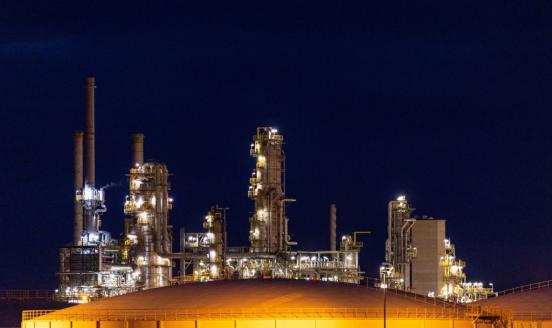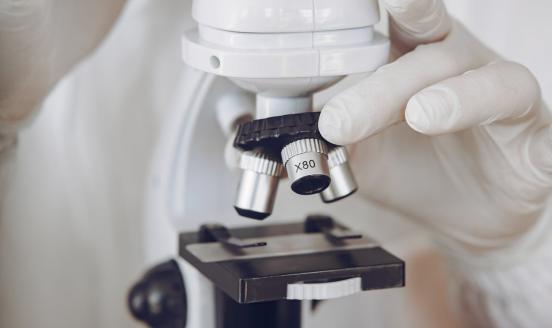Standing on the shoulders of distant giants
New inventions build on earlier inventions, so patent citations are one indication of who is standing on whose shoulders. We show that four low-carbon

Innovation and industrial activity in a specific technology often agglomerates in a few geographic areas The automotive industry in south-west Germany or the IT industry in Silicon Valley are conventional examples. One of the contributing factors for agglomeration are knowledge spillovers between local actors. Such knowledge spillovers are likely to play an above-proportionate role for the agglomeration of knowledge-intensive emerging technologies. As those knowledge-intensive emerging technologies promise the hosting region higher growth, many regions are eager to attract them. Understanding geographic spillovers is crucial to assess the potential of targeted regional policies.
By attributing millions of patents to companies and geolocating those companies, we can conduct a unique analysis of the patent citation behaviour of four low-carbon technologies. To understand the importance of geographic spillovers for our four technologies, we analysed the distance between inventors and the inventors of other patents cited in our patents. Such citations, which identify significant previous patents on which the new patent builds, are part of patent filings. Each patent’s applicant is required to reference previous patents which have been useful for developing the new knowledge described in the patent itself. Citations to previous patents can be added also by the patent examiner (see Annex 1 for more details about data and methodology).
Source: Bruegel based on PATSTAT
For battery patents, the majority of citations are of patents that referred to the same technology (blue and green bars). Patenting activity is rather distance-sensitive, with more than 40% of the citations occurring between patents issued by companies located in the same place; and more than half within a range of 200 km[1].
Source: Bruegel based on PATSTAT
For wind turbines patenting activity mostly cites patents previously issued by the same company and refers to the same technology (blue bar). But relatively many of the cited patents come from a different region.
Source: Bruegel based on PATSTAT
For electric vehicles patenting activity does not rely only on previous electric vehicles patents (blue and orange bars). About half of the cited patents are from different technologies (green and red bars). With slightly less than half of the cited patents being from more than 200 km away, geographic proximity seems to play a relatively less important role in the electric vehicle sector.
Source: Bruegel based on PATSTAT
For solar panels we observe a very high geographical concentration of the patenting activity. The predominant role is played by the "same company-same technology" segment, which counts for more than 40% of the citations. Moreover, almost 60% of the patenting activity is concentrated within 200 kilometres.
Our findings are in line with the literature, indicating a strong concentration of spill-overs within clusters. For all four technologies, between a quarter and a half of the cited patents are applied for by a person or company whose address is less than 50 kilometres away from the address given in cited relevant patents. Innovators tend to climb on the shoulders of nearby giants. The four technologies benefit from different types of knowledge-spillovers. We can observe more important technological clusters for batteries and solar panels, while this is less evident for electric vehicles and wind turbines. Solar panels represent the technology with the highest geographical concentration of citations. At the same time, solar PV and electric vehicles are more relying on related technologies while batteries and wind turbines mostly cite patents within the same technological class. Table 1 summarises our findings into a simplified matrix.
Table 1: relative importance of distance and technology in citations
| Geographic distance | |||
| Very important | Less important | ||
| Same technology | Very important | Batteries | Wind turbines |
| Less important | Solar | Electric vehicles | |
It is too early to draw specific policy recommendations such as “focus policy support for electric vehicles to regions that already excel in related technologies as regional spill-overs matter” or “support national champions in photovoltaics as the within company spill-overs are so large” based on our limited analysis. But our results indicate that geographic knowledge spill-overs matter and that these spill-overs differ markedly between technologies. Hence, cluster policies should be differentiated depending on the technology.
Annex
We use patent citations to measure knowledge spillovers within EU countries. Each patent´s applicant is required to reference previous patents which have been useful for developing the new knowledge described in the patent itself.
Each patent is registered by one or more applicants, who can be either individuals or companies. In our analysis, we use the phrasing "company" instead of applicants, since we observe as the majority of the applicants are de facto companies, rather than individuals.
Each single patent refers also to one or more specific technology that has been used to develop the new knowledge. As pointed out before, we are interested in studying the following low-carbon technologies: batteries, solar panels, electric vehicles and turbines.
We use data from the World Patent Statistical Database (PATSTAT), maintained by the European Patent Office (EPO). PATSTAT includes close to 70 million patents from 107 patent offices as far back as 1844. We are interested in studying those patents registered within the EU countries.
We identify our technologies of interest by using the International Patent Classification (IPC) codes.
Table 2: IPC codes for the different technologies
| Technology | IPC Code |
| Batteries | H01M |
| Wind turbines | F03D |
| Electric vehicles | B60L |
| Solar panels | H01L |
Looking at these four specific technologies, we analyse around 11050 patents and 35070 corresponding citations.
Table 3: number of observations in terms of patents and citations
| Batteries | Wind Turbines | Electric Vehicles | Solar panels | |
| Patents | 1946 | 852 | 928 | 7325 |
| Citations | 4670 | 2109 | 2706 | 25587 |
| Patents/Citations | 42% | 40% | 34% | 29% |
The main idea is to measure for each single patent citation the geographical distance that occurs between the "source company", i.e. the applicant of the registered patent, and the "cited company", i.e. the applicant of the cited patent that was previously registered.
Note again as for each single patent, we can have more than one applicant. In this case, we are going to consider each single citation for computing the geographical distance between "source" and "cited" companies.
We want to look at the shares of citations that occur:
- between patents based on the same technology and issued by the same company.
- between patents based on different technologies, but issued by the same company.
- between patents based on the same technology, but issued by different companies.
- between patents based on different technologies and issued by different companies.
The only information we miss from PATSTAT is the exact location of each company, in terms of geo coordinates.
For this purpose, we make use of the Orbis database, which contains data on over 200 million private companies worldwide. Orbis does not necessarily contain the geo coordinates information of all the companies we might have in PATSTAT.
We therefore make use of the "fuzzy" geocoding dataset, which has been produced by former Bruegel fellow Mark Huberty, to find an appropriate match between PATSTAT applicant information (address or city) and a set of geo coordinates.
Once we merge this information with the PATSTAT dataset, we can easily compute for each citation the geographical distance between the ´source company` and the ´cited company`.
For a matter of simplicity, we will show our results on a scale going from 0 kilometres to a distance greater than 1200 kilometres.
Again, it is important to underline as each patent can have more than one applicant. The result is that we can have for a same patent multiple combinations of cited/source companies. We report in the following a practical example from the PATSTAT dataset.
Table 4: example of the used "weighting" system
| Cited Patent | Source Patent | Cited Company | Source Company | Weight |
| 1682 | 331946649 | itmb1281765 | fr341459386 | 1/2 |
| 1682 | 339977187 | itmb1281765 | fr341459386 | 1/2 |
In the previous table we have the patent application id. 1682, to which are associated two different citations from two different patents (id. 331946649 and id. 339977187).
We have only one applicant for this cited patent (company id. itmb1281765), and one applicant for the corresponding source patent (company id. fr341459386). Therefore, we have two different combinations.
In order to properly "weight" the two citations, we assign in this case to each of them a weight of 1/2. Using this approach, we avoid the risk of overestimating those patents which are cited multiple times.
Batteries and solar patents much more strongly cite patents of nearby inventors than wind and EV patents. At the same time, batteriy and wind patents more strongly cite patents from the same technology, than solar and electric vehicles patents.



